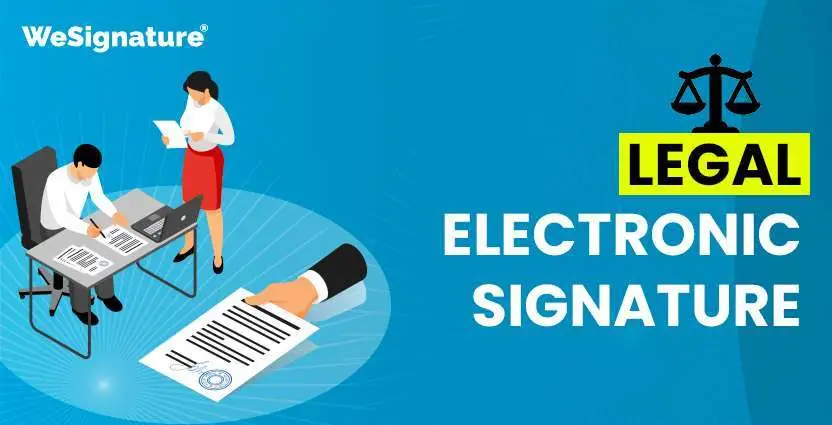Legal Electronic Signature: What You Need to Know

In the swiftly changing modern era, technology has made immense strides, and electronic signatures have become an increasingly pervasive facet of it. These electronic signatures have now become a critical component in the performance of business transactions, and a multitude of individuals are adopting them due to their convenience and effectiveness. However, the fundamental question arises: what exactly constitutes a legal electronic signature, and how does it operate? In this blog, we shall embark upon a comprehensive exploration of all the pertinent particulars concerning legal electronic signatures.
Let;s begin to learn it
What is a Legal Electronic Signature?
A legal electronic signature is a digital way of signing documents like PDFs, Word files, Google Docs and emails. It’s like a unique ID that confirms who signed the document.
An electronic signature is the digital footprint of an online handwritten signature and proves the signer’s identity and agreement to the document’s content.

Sign from Anywhere: The Convenience of Legal Electronic Signature
WeSignature is a fast and efficient way to sign legal documents electronically. With user-friendly platform, you can easily sign and manage documents from anywhere at any time. Try it now and enjoy the simple procedure of this legal electronic signature in minutes!
The Legality of Electronic Signatures
Electronic signatures are well-established and mandatory in various nations like the United States, Canada, and the European Union. The legal status of electronic signatures depends on specific electronic signature laws that precisely determine their genuineness and enforceability.
How do Legal Electronic Signatures Work?
Legal electronic signatures utilize specialized encryption and authentication technology to affirm the signatory’s identity and guarantee the document’s untampered status. Additionally, the digital signature affixes to the document utilizing a distinct code, which originates from a private and public key. The signatory retains the private key in secrecy, while sharing the public key with the receiver to substantiate the signature’s legality.
Benefits of Legal Electronic Signatures
Legal electronic signature is changing the workflow in every organization. There are several benefits of electronic signatures, some of the top benefits mentioned below:
Efficiency
Electronic signatures are much faster and more efficient than traditional handwritten signatures. Documents can be signed and sent in seconds from any device and location, which saves user’s time and reduces delays in the signing process. These legal electronic signatures are particularly useful for businesses that require multiple signatures or need to sign documents online quickly.
Security
Legal electronic signatures are more secure than traditional signatures because they use encryption technology to protect the document and signature, making tampering difficult. It also provides an audit trail that records the date, time, and signature details. This makes it easier to track any changes made to the document and identify who made them.
Risks Associated with Non Legal Electronic Signatures
Despite the manifold benefits that electronic signatures bestow upon us, we must also contend with the associated risks that they bring. One such peril is the specter of fraudulence, which looms over us if we do not exercise utmost caution while deploying legal electronic signatures.
This risk becomes especially salient when the signer’s identity is not verified in a reliable manner. In such a situation, we become vulnerable to malevolent actors who might orchestrate fraudulent transactions or gain unauthorized access to sensitive information.
Identity theft poses another potent threat that electronic signatures expose us to. Unscrupulous elements can exploit inadequately protected personal information to wreak havoc in various ways.
These can range from nefarious activities such as unauthorized access to the signer’s accounts to the outright theft of highly sensitive information. To counter these perils, we must remain vigilant and adopt appropriate measures to mitigate the risks associated with electronic signatures.
How to Ensure the Validity of a Legal Electronic Signature?
Ensuring the genuineness and lawfulness of electronic signatures involves taking various steps. These comprise:
- Ascertaining the identity of the signer through a trustworthy identification verification service.
- Utilizing a secure electronic document management software that safeguards the record and the signature.
- Confirming that the electronic signature adheres to the legal prerequisites for validation and enforceability in the relevant jurisdiction.
Ensuring the legal electronic signature’s integrity and authenticity is crucial to prevent vulnerability to fraudulent activities. Hence, the above measures must be strictly adhered to for the electronic signature to be considered as legitimate and legally binding electronic signature.
Some Legal Electronic Signatures International Laws
Electronic signatures are recognized as legally binding endorsements in the majority of countries throughout the globe. Nonetheless, the exact legal prerequisites for electronic signatures may diverge depending on the jurisdiction. As an illustration, the European Union has embraced the eIDAS Regulation, which endows a homogenous legal structure for electronic signatures across the EU.
The legal system in the United States relies on two legislative acts, namely the Electronic Signatures in Global and National Commerce (ESIGN) Act and the Uniform Electronic Transactions Act (UETA), which serve as the foundation for electronic signatures’ legal structure.
Conclusion
Legal electronic signatures have gained global acceptance and popularity for document signing. With their ease of use, security measures, and cost-effectiveness, they offer many benefits over traditional ink signatures.
Understanding electronic signature laws in different places is crucial for ensuring their validity and enforceability.
Legal electronic signatures are expected to grow as businesses and individuals recognize their convenience and practicality.
